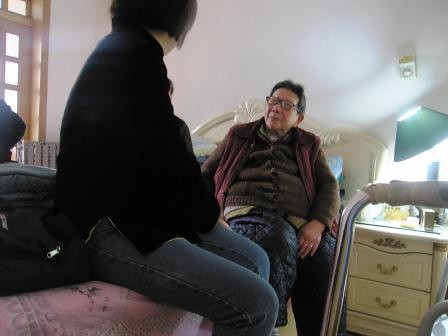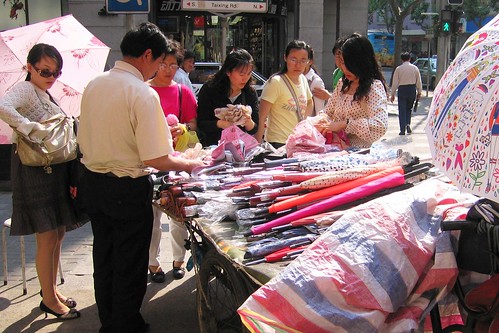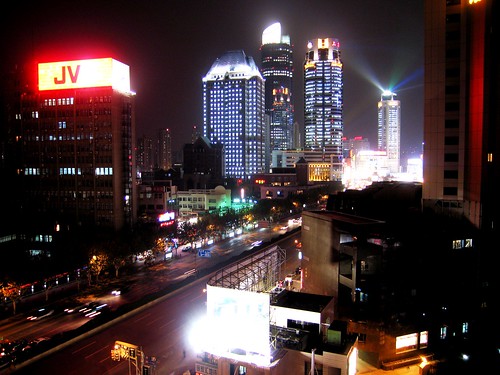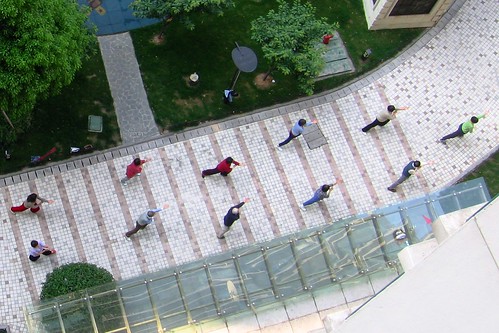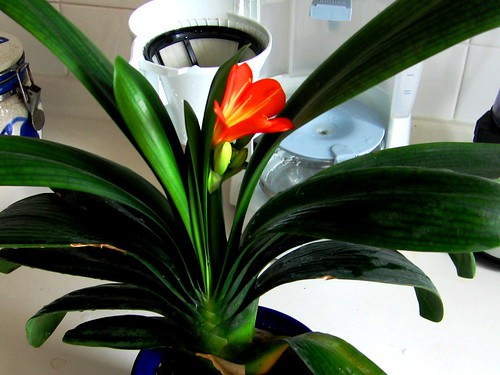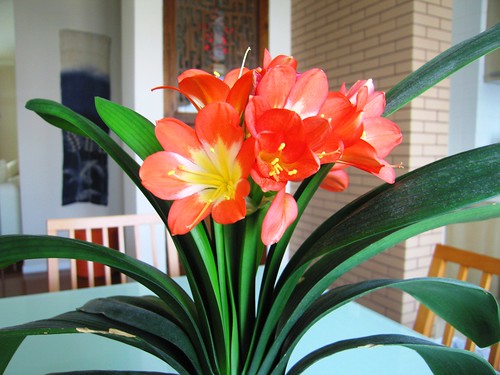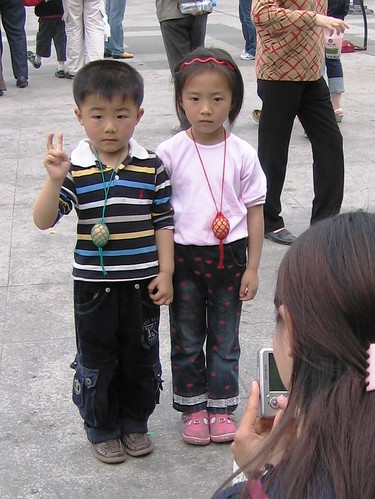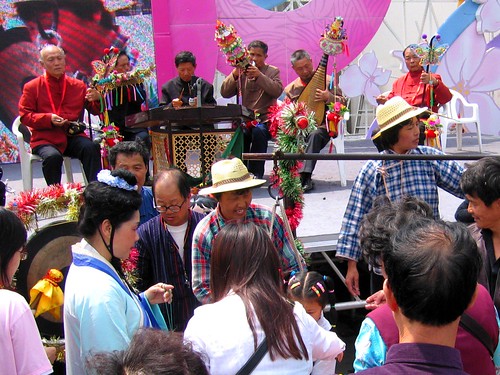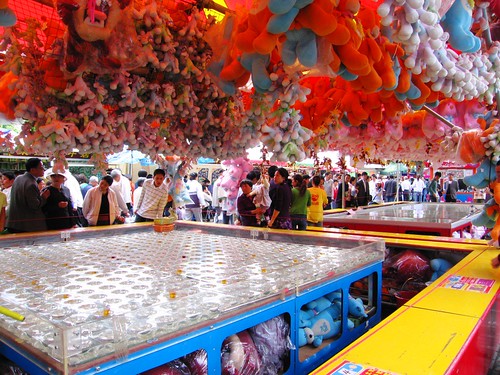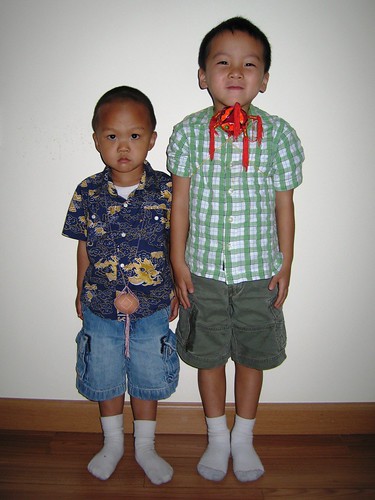During World War II, the city of Shanghai provided refuge to a Third Wave of Jews escaping from persecution in Europe. During this era, there was a great contrast between the stateless refugees who fled from war-torn Europe and the established Jewish entrepreneurs who were prospering in Shanghai. Now, the Sephardic and Russian business communities worked together to organize food, shelter and clothing for the European refugees.
From 1938 on, some 20,000 Jewish refugees from Germany and Austria escaped to Shanghai, the only place in the world that did not require a visa to enter. Among them was Michael Blumenthal, who later became U.S. Secretary of the Treasury in the Carter Administration, and the late Shaul Eisenberg, who founded and ran the Eisenberg Group of Companies in Israel.
Between 1939 and 1940, approximately 1,000 Polish Jews escaped to Shanghai, avoiding certain death. Among these, all the teachers and students of the Mir Ygshiva, some 400 in number, miraculously survived and continued their studies in the Beth Aharon Synagogue, the only place of worship with space enough to hold the entire Yeshiva. They escaped Poland through Vilna, obtained transit visas to Japan from Sugihara Chiune, the Japanese consul in Kovno, and finally made their way to Shanghai.
The Japanese invaded China in 1937, and later occupied the area around Shanghai. From December 1941 to 1945, the Japanese interned the population of Shanghai Jews who were citizens of Allied countries. "Stateless refugees" from Germany, Austria, or Poland were relocated to a ghetto in Hong Kou ("Hong Kew"), while those from neutral countries like Iraq and Russia were left alone. Despite these difficult conditions, the Jewish community adapted to retain its culture, tradition and social lifestyle.
By the end of the war, Shanghai was home to approximately 24,000 Jews. After the end of the war in 1945 and with the founding of the People's Republic of China in 1949, the community dwindled, with many Jews emigrating to Israel, the United States, Australia and Hong Kong.
-From www.chinajewish.org.
The Jewish Quarter is north-east from where Suzhou Creek meets the Huangpu River. It's actually quite close to downtown, a few minutes from People's Square by taxi, and just across the Huangpu River from the Pearl Tower.
We rode Metro Line 1 to the Yangshupu Station and for our first stop headed east, away from the Jewish Quarter, to the historic (founded in the 1880's), sprawling, riverside, and still operational, Shanghai Waterworks. Unfortunately the museum was closed and according to the guard "not open to individuals". Hmm. However we had a good view of the historic buildings through the fence and luckily the road in front was torn up for repair and offered a good view of some humongous water pipes. Great guy stuff!
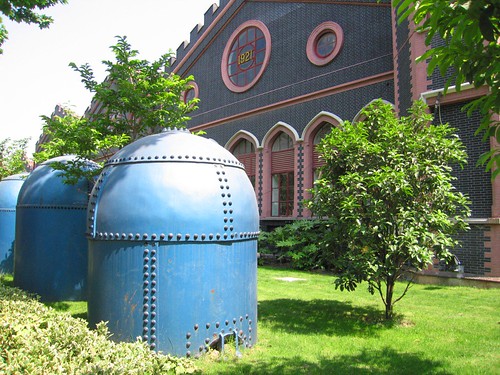
Rode bus #21 3 stops back west. After getting our bearings, we hit the sites, all roughly clustered around the intersection of Houshang Lu and Zhoushan Lu: Houshan Park with a plaque commemorating the "Stateless Refugees", the Vienna Cafe, and the Synagogue which was under renovation but due to reopen in August.
Vienna Cafe.
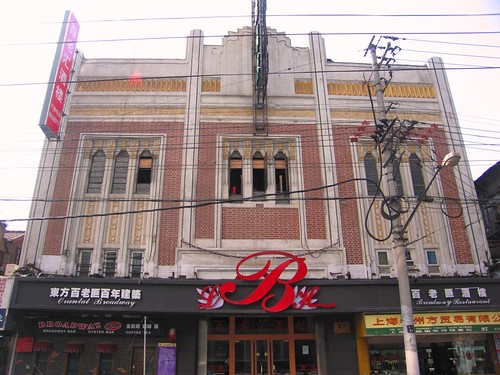
View to Houshan Lu.

While walking around we saw these guys playing a type of billiards game. Sun-Ling says she remembers seeing it played when she was a child.
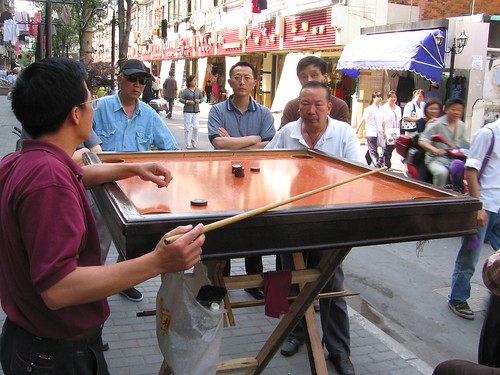
In addition to the Jewish history, this area is also home to a prison and a Buddhist temple.
The Shanghai Tilanqiao Prison,formerly known as the Shanghai Municipal Gaol, is almost right across the street from the synagogue, and features a magnificent art deco gate (no photos allowed but here is an old photo I found on the web), guard towers with guards and guns, and an impressive complex of brick buildings, mostly art deco. We asked the guard about getting a tour. He said there tours for officially invited groups, but not for individuals. Hmm.
On one side of the prison is an art deco hospital; formerly and/or currently the prison hospital. On the other side, a line of shops. And in the shadows behind, a flower and bird market from where you can see inmate's laundry hanging in cell windows.
Prison hospital.
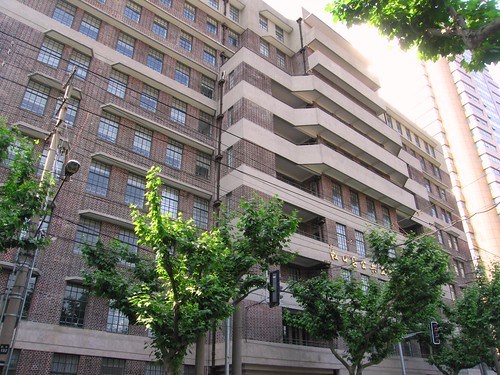
Just a few blocks away at 73 Kunming Lu, in the XiaHai Miao Buddhist Temple and Nunnery open daily from 7AM to 4PM (7AM to 7PM on the 1st and 15th of the lunar month). The recently refurbished temple is home to about 30 nuns. We arrived at 3:45 and got to see the 4PM prayers. Vegetarian food is served on the 1st and 15th.
Here is the main temple.
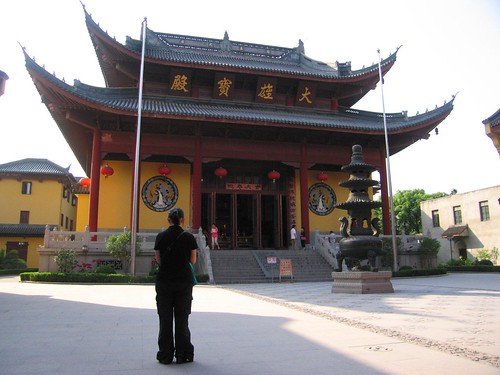
Two of the four guardians.
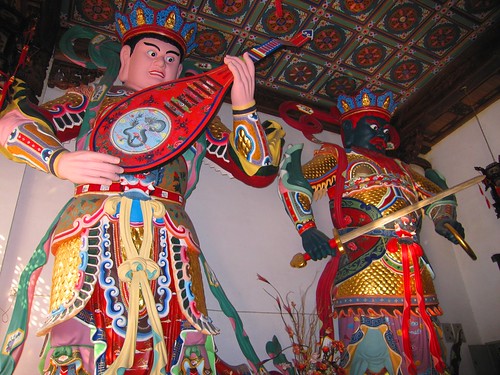
Just down the street is a vegetarian restaurant. We bought 6 vegetarian zongzi "to go" for 6 RMB total.
A few block south and west of the temple, at 505 Dong Changzhi Lu, is this awesome example of Art Deco architecture, the Lester Institute of Technical Education.
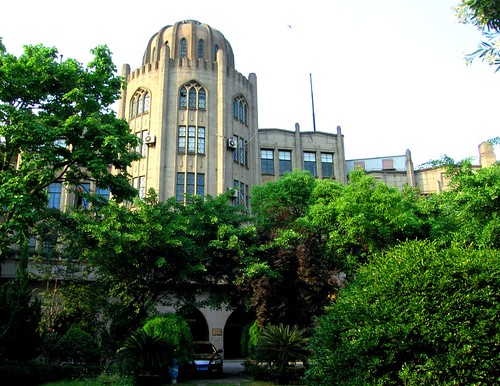
Just before grabbing a taxi home, we saw this unidentified structure on the riverbank. Hmm. Maybe a viewing stand of some sort.
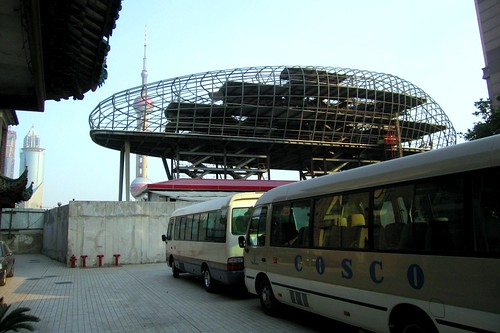
Finally, from the newish Yangshupu Metro Station: Drinks, Meds, and Photos.
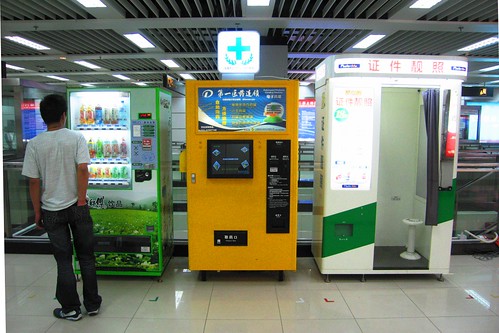
To see all the photos from May 19, 2007, click here.

